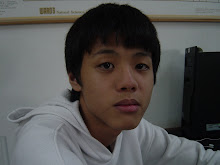From the reading of Chapter 9 ~ 10, "Feedback & Wait for it!"
I learned about sensors.
First, I learned about condition.
The condition is the thing, which the sensors can detect and react on.
Which means that, the program and the robot wil perform specific actions based on the conditions of things.
Then, I learned about each five different sensors.
In NXT, there are touch, sound, light, ultrasonic, and rotation sensor.
Touch sensor has a button in front of its sensor, and the robot will do specific action, when the button is pressed or released. It is useful, when you want your robot to avoid being crushed with e wall or object.
Sound sensor is a sensor that does certain action depend on the sound. When the sound played or stopped, the robot will do specific action, and that sound is recorded by the sound sensor. If there is no sound sensor, the user is not able to start robot with crapping.
It is useful, when you want your robot to start, when the sound is played, or after a sound the robot will start its program.
Light sensor, is a sensor of light. It is able to compare the lightness of the object with atmosphere, and does specific action, depends on the amount of light.
It is useful, when you want your robot to do program in the dark place, depend on the small light, or to follow the line that is darker than other atmosphere.
Ultrasonic sensor is a cool one. It sends out the ultrasonic wave from the sensor, and absorbs the bounced back waves. During that time, the sensor also measures the time the wave took to bounce back. It can determine, how much the object in front of the sensor is away from the robot.
It is useful, when you want your robot to detect nearest object from your robot, or to change its direction, before crushing to the object. It can escape, as the robot knows how far the object is from the robot.
Last one is rotation sensor. It is the sensor, we most commonly use. It is sensor attached into the motor, and measures the rotations, degrees, or time the motor is running.
It is useful, when your robot to stop its motor, after certain amount of rotations, or degrees, or time.
Wait block is most important block for sensors, as all five sensors require wait blocks. It determines the specific information about eh sensor, for example how much, how far, or how long. It simply means, the robot will wait for specific measures, until it meets the sensor program, or complete.
Final Class Blog
-
Robotics has come to an end after a semester of hard work and programming.
I have learned many new things such as robot construction, programming the
NXT, ...
16 years ago





